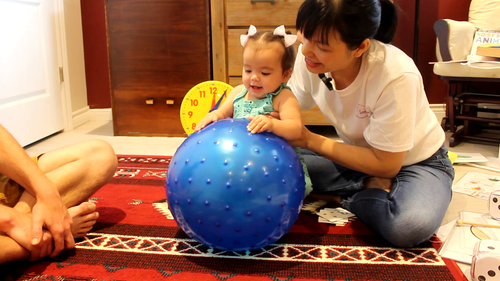In today's digital age, the question of whether to use technology in early childhood education has become increasingly relevant. As technology becomes more integrated into our daily lives, its role in shaping the learning experiences of young children (ages 0 to 5) is a topic of significant debate. This article will explore the advantages and disadvantages of technology in early childhood education, particularly focusing on its effects on the developing brain, and will offer strategies for effectively integrating technology into early learning environments.
Advantages of Technology in Early Childhood Education
1. Enhanced Learning Experiences
Technology can provide diverse and engaging learning experiences that traditional methods may not offer. Interactive apps, educational games, and multimedia resources can make learning fun and captivating for young children. For example, apps that teach letters, numbers, and shapes through colorful animations and interactive play can help children grasp basic concepts more quickly and enjoyably.
2. Individualized Learning
One of the significant advantages of technology in early childhood education is its ability to offer personalized learning experiences. Educational software can adapt to the individual learning pace and style of each child, providing targeted exercises that address specific strengths and weaknesses. This individualized approach can be especially beneficial for children with learning disabilities or those who need extra support in certain areas.
3. Development of Digital Literacy
Introducing technology at an early age helps children develop digital literacy skills that are essential in today's world. Early exposure to technology can teach children how to navigate digital devices, use educational apps, and understand basic computer functions. These skills are increasingly important as technology continues to play a pivotal role in education and everyday life.
4. Access to a Wealth of Resources
Technology provides access to a vast array of educational resources that can enhance traditional teaching methods. Online libraries, educational videos, and interactive websites can supplement classroom instruction and provide additional opportunities for learning. For instance, virtual field trips can take children to places they might never visit in person, expanding their horizons and enriching their educational experiences.

Disadvantages of Technology in Early Childhood Education
1. Potential for Overstimulation
While technology can be a powerful educational tool, excessive use can lead to overstimulation. Young children's brains are still developing, and too much screen time can overwhelm their sensory systems, potentially leading to attention issues and difficulties in concentrating. It's essential to strike a balance and ensure that technology use is moderated.
2. Limited Social Interaction
One of the critical aspects of early childhood education is the development of social skills. Excessive use of technology can limit face-to-face interactions, which are crucial for building social competence. Children learn empathy, cooperation, and communication through interactions with peers and adults, and these experiences cannot be fully replicated through screens.
3. Risk of Passive Consumption
Not all technology use is interactive or educational. There is a risk that children may passively consume content without engaging in meaningful learning activities. Watching videos or playing non-educational games can lead to passive consumption, which does not promote critical thinking or active learning.
4. Health Concerns
Extended screen time can have adverse effects on young children's health. It can contribute to issues such as eye strain, disrupted sleep patterns, and reduced physical activity. Encouraging a healthy balance between screen time and other activities is crucial for children's overall well-being.
Effects of Technology on the Developing Brain
Understanding how technology impacts the developing brain is essential for making informed decisions about its use in early childhood education. Research indicates that technology can influence various aspects of brain development, both positively and negatively.
1. Cognitive Development
Interactive and educational technology can support cognitive development by enhancing problem-solving skills, memory, and language acquisition. For example, educational apps that require children to solve puzzles or follow multi-step instructions can improve their cognitive abilities. However, it's important to ensure that the content is age-appropriate and designed to promote active engagement.
2. Attention and Focus
The fast-paced nature of digital media can affect children's attention spans. While short bursts of engaging content can capture children's interest, prolonged exposure to rapidly changing stimuli may hinder their ability to focus on slower-paced activities, such as reading or listening to a story. Balancing screen time with activities that promote sustained attention is vital.
3. Language Development
Technology can play a role in language development by providing exposure to new vocabulary and language structures. Interactive storybooks and language-learning apps can support language acquisition, especially for children in bilingual environments. However, it's essential to complement technology use with rich verbal interactions from caregivers and educators.
4. Social-Emotional Development
The impact of technology on social-emotional development is complex. While some educational programs are designed to teach social skills and emotional regulation, excessive screen time can detract from real-world social interactions. Encouraging collaborative and interactive technology use, such as group activities and games, can help mitigate this issue.

Integrate Technology Effectively in Early Childhood Education
To harness the benefits of technology in early childhood education while minimizing potential drawbacks, it's crucial to integrate it effectively. Here are some strategies for doing so:
1. Set Clear Guidelines
Establish clear guidelines for technology use in early childhood education settings. This includes setting limits on screen time, selecting age-appropriate content, and ensuring that technology complements rather than replaces traditional learning activities.
2. Focus on Quality Content
Choose high-quality educational content that is designed to promote active engagement and learning. Look for apps, games, and resources that align with educational goals and are developmentally appropriate for young children.
3. Encourage Interactive Use
Encourage interactive and collaborative technology use. Activities that require children to work together, solve problems, and engage in meaningful interactions can enhance learning and support social development.
4. Balance Screen Time with Other Activities
Ensure that technology use is balanced with other important activities, such as outdoor play, hands-on learning, and face-to-face interactions. A well-rounded approach to early childhood education should include a variety of experiences that promote physical, cognitive, and social development.
5. Involve Parents and Caregivers
Involve parents and caregivers in the process of integrating technology into early childhood education. Provide guidance on selecting educational content, setting screen time limits at home, and engaging in joint media activities that promote learning and bonding.
The use of technology in early childhood education presents both opportunities and challenges. While it can enhance learning experiences, provide individualized instruction, and develop digital literacy, it also carries risks of overstimulation, limited social interaction, passive consumption, and health concerns. By understanding the effects of technology on the developing brain and adopting strategies for effective integration, educators and parents can ensure that technology serves as a valuable tool in early childhood education. Ultimately, a balanced approach that combines technology with traditional learning methods will best support the holistic development of young children.
At Smartizen, we provide various classes focus on whole brain education to develop cognition, emotion, and motor skills for kids from 6 months to 6 years old. Explore our programs here and don’t hesitate contact us for free trial class or more information.








